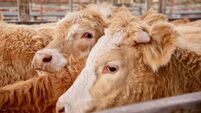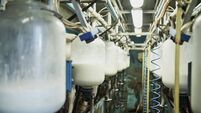Teagasc news: Major investigation of salmonella in pigs

The finding that feed is a relatively minor source of infection for pigs is welcome news for feed manufacturers and pig producers.
However, strains of salmonella known to cause human illness were recovered both from feedstuffs and pig faeces sampled on the same farm, and from feed/feed ingredients at feed mills — a cause for concern, according to researchers.
Salmonella in pigs is a significant food safety concern in Ireland, with recent studies showing that up to 45% of pigs presented for slaughter carry salmonella, while carcass contamination rates range from 15 to 20%.
The Teagasc findings will assist pig producers in reducing salmonella prevalence, thereby helping them to fulfil their obligations under the national pig salmonella control programme.
Data generated will also help to formulate policy on pre-harvest salmonella control measures.
Even minor salmonella contamination in feed can affect many pig herds, and may subsequently cause human infection.
Therefore salmonella in pig feed must be considered an important risk factor, and continued monitoring of feed ingredients and finished feed for the presence of salmonella is critical.
Researchers found that pelleting reduced salmonella prevalence, but did not completely eliminate contamination.
And a sodium butyrate feed additive investigated as a potential control measure for stored pig feed was found to be ineffective in reducing salmonella during feed storage
The in-depth Teagasc study, with Waterford Institute of Technology and the Department of Agriculture collaborating, was conducted on 10 commercial pig farms with a history of salmonella.
Each farm was visited twice, and 2,975 samples were taken, consisting of 926 faecal samples, 1,011 environmental samples (swabs from feed troughs, water drinkers and feed bins), 453 water samples (from header tanks, nipple drinkers and water troughs), and 585 feed samples (from feed bins, bags and hoppers), across all pig production stages.
Samples were analysed for the presence of salmonella.
The next phase of the project involved testing for salmonella in feed ingredients and compound pig feed sampled from five commercial feed mills and one home compounder, supplying the 10 farms.
Salmonella was detected in the pigs on nine farms.
Monophasic variants of S Typhimurium predominated.
These are increasingly implicated as a cause of salmonella food poisoning in humans.
Only 2.4% of feed samples taken across all production stages were salmonella-positive.
These originated on six farms and monophasic variants of S. Typhimurium were again the most commonly isolated.
Feed sampled from dry sows had the highest salmonella prevalence.
In the feed mill study, salmonella was recovered from only two of the 340 feed ingredients analysed, in wheat from one commercial mill and soybean meal from the home compounder.
It was detected in three of the 313 compound feed samples analysed.
The proportion of meal feed samples with salmonella was 1.6%, whereas only 0.5% of pelleted diets were contaminated.
All had monophasic variants of S. Typhimurium.
Two of these found in feed ingredients and compound feed were indistinguishable from isolates recovered from both feed and pig faeces sampled on two farms.
The strain recovered from finisher meal at a commercial mill had the same fingerprint as that recovered from finishing pigs and feed on a farm supplied by the same feed mill.
As the feed mill isolate was recovered from feed aseptically sampled in the mill, there was no possibility of contamination on-farm or during transport --- evidence that feed has a possible role to play in transmission of salmonella to pigs.












